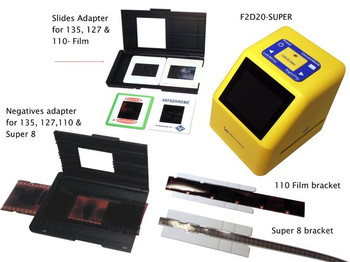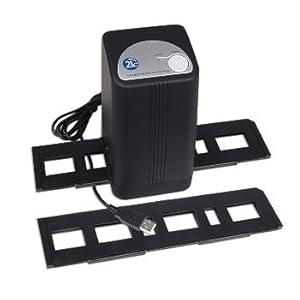

- 21c film and slide digital converter portable#
- 21c film and slide digital converter Bluetooth#
- 21c film and slide digital converter professional#
Review of the Best Film Scannersīelow, we have rounded up a short-list of the best film scanners on the market. They're also great for keeping family photos safe for years to come. We recommend mid-priced scanners for those that want to digitize important documents, like receipts, letters, and bookkeeping materials.
21c film and slide digital converter professional#
On average, they include a 14-megapixel sensor that captures images in high definition, yet doesn't quite capture the clarity of professional models. Hobby-level scanners can convert multiple types of film, like 35mm, 126, 110, and 8mm, into one digitized format. Most opt for hobbyist devices, like the Kodak Scanza, that compares reasonably well to the best scanners. Interestingly, many of the most expensive models only specialize in one type of film for the most specific sets of purposes. Of course, professional-grade scanners can be very expensive. Moreover, these professional scanners utilize a thin glass lens to capture 4,000 dpi optical resolution with CCD image sensing technology and 40-bit color output. They utilize digital ICE tech to automatically correct for scratches, cuts, tears, and creases in the finished scan. The highest-quality film scanners are able to produce digitized images with the highest clarity and color resolution. Of course, not all film scanners are made equal - different products will vary significantly in terms of price, quality, features, and extensibility. Many are turning to film scanners, which allow the film to be scanned directly to a computer without the need for any intermediate printmaking stages. Got a bunch of family photos or memories stuck on old reels of film? Not to worry - now, it's cheaper and easier than ever to safely scan and host them on the Cloud. How Do Hobby Film Scanners Differ from Professional-Grade Scanners? Videos can be saved onto the SD card or transferred to a computer. The scanner converts 3", 5", and 7" reels of 8mm film into digital files. You can adjust brightness, sharpness, and framing. This easy-to-use device allows for multiple viewing options and requires no computer or external software. The device features a 3.6D high dynamic range and powerful software. It automatically corrects scratches and lightens ultra-dark shadow areas, which makes this product especially well-suited for black-and-white film.

This high-performance scanner supports a broad range of film and image types. It is energy-efficient and no warm-up time is needed. It removes the appearance of dust and scratches from film, easily restores faded colors, scans slides, negatives, and medium-format panoramic film. It is made by a trusted brand and features a 3.5" LCD screen, intuitive interface, and multiple options for device pairing and digitized scan sharing.Ī popular choice of photographers, it allows for creating enlargements up to 17” x 22”. It handles 35mm, 126, 11, Super 8, 8mm negatives. This versatile device converts both negatives and slides to digital files. The Plustek OpticFilm 8100 can handle different slide types because of the built-in ICC profile and is ideal for scanning black-and-white film. Besides, this is an energy-efficient option. The Epson Perfection V600 effectively removes imperfections from scanned photos, allows for enlargements from film, and restores faded colors. These models have their peculiarities, too. On the other hand, there are pricier scanners like Plustek and Epson that are designed for professional photographers. It is user-friendly, easy-to-use, and comes with a display. An excellent example is the KODAK SCANZA scanner, which is a good choice for in-home use and hobbyists.

21c film and slide digital converter Bluetooth#
21c film and slide digital converter portable#



 0 kommentar(er)
0 kommentar(er)
